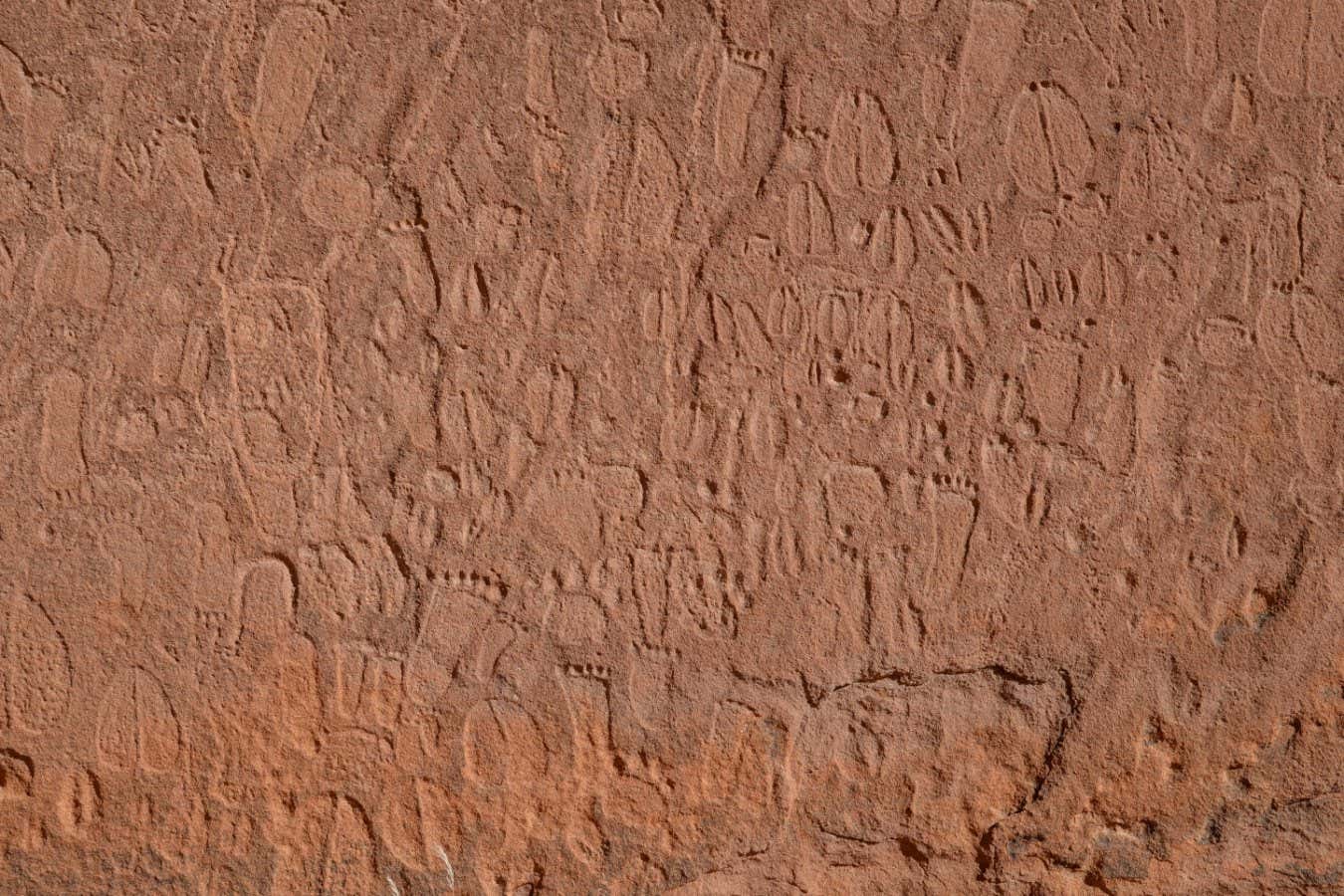Animal footprints carved into rock thousands of years ago depict over 40 species, a trio of trackers has determined
By Michael Le Page
13 September 2023
Rock art in Twyfelfontein, Namibia
Andreas Pastoors, CC-BY 4.0
Expert trackers have been able to identify the species depicted in around 400 animal footprints carved on rocks in Namibia during the Stone Age. In most cases, they were also able to identify the animal’s sex, the exact leg that made the print and whether the animal was an adult or not.
Numerous rock engravings thought to be up to 5000 years old have been found in sites around an area called Twyfelfontein in north-west Namibia. Many depict animal or human footprints, so Andreas Pastoors at the University of Erlangen-Nuremberg in Germany asked three trackers from Namibia, Tsamgao Ciqae, /Ui Kxunta and Thui Thao, to help his team study them. The three usually work for commercial hunters.
The trio identified the engraved animal tracks as depicting more than 40 species, ranging from rhinos and giraffes to aardvarks and porcupines. Around 60 of the tracks are those of birds, such as the secretary bird and the marabou stork.
Advertisement
Read more:
Cave art pigments show how ancient technology changed over 4500 years
Most species depicted are still found in the area, but some – including blue wildebeest, buffalo, bushbucks and vervet monkeys – are found only in areas with more water, hundreds of kilometres away. Pastoors says there is no evidence the climate has changed in the region, so he thinks those who did the engravings must have travelled to where these animals lived.
The trackers also identified the sex depicted in around 100 engraved human footprints at the same sites, along with whether the footprints were meant to be those of an adult or child. The trackers identified the vast majority as depicting the footprints of children, with just 15 out of 106 being attributed to adults and three being unclear.
